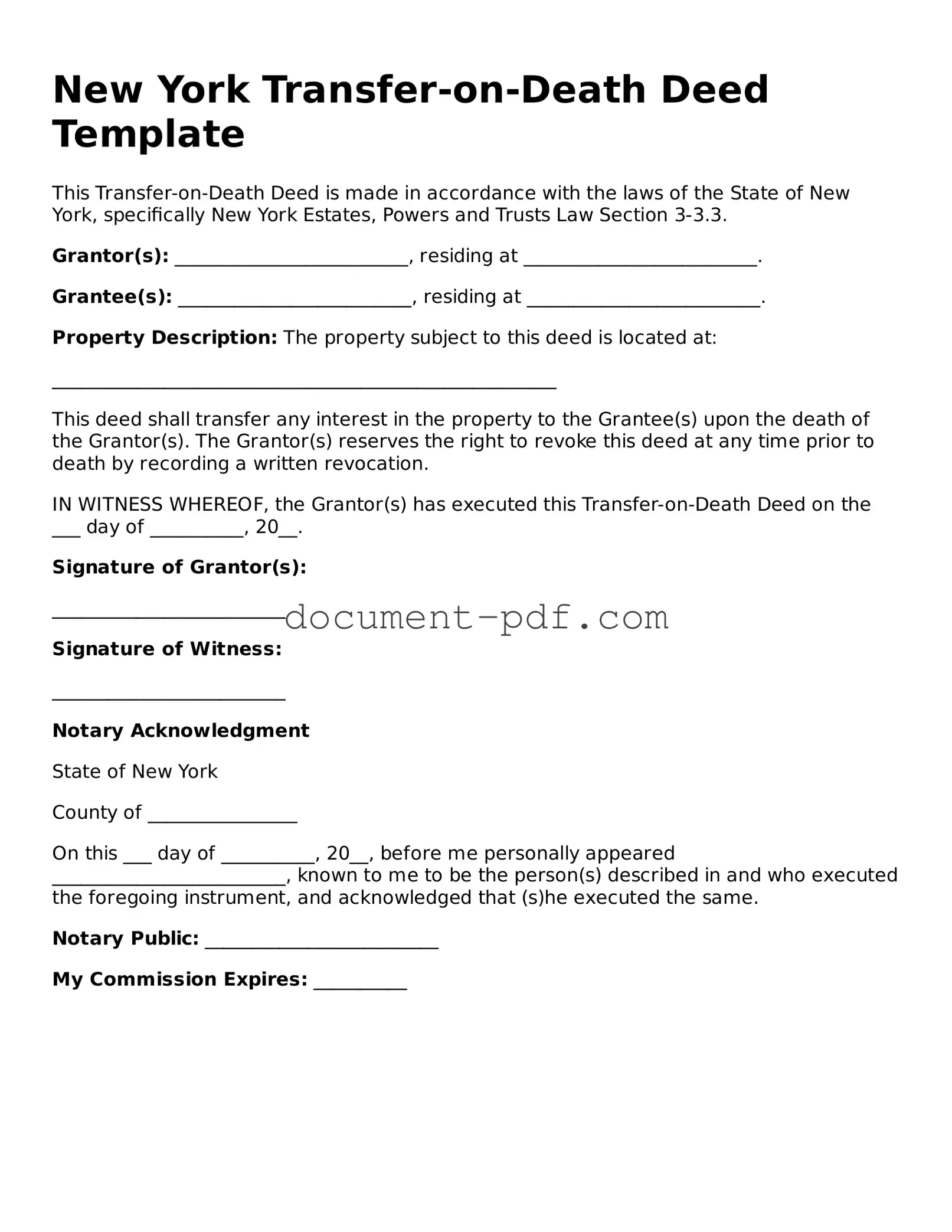The New York Transfer-on-Death Deed (TOD) form is similar to a Last Will and Testament. Both documents serve the purpose of transferring assets upon the death of an individual. However, while a will goes through probate, a TOD allows for a more straightforward transfer without the need for court involvement. This can expedite the process and reduce costs for the beneficiaries, making it a favorable option for many individuals looking to streamline their estate planning.
Another document that shares similarities with the TOD is the Revocable Living Trust. Like the TOD, a living trust allows for the transfer of assets outside of probate. The trust can be amended during the grantor's lifetime, providing flexibility. Upon the grantor's death, the assets in the trust are distributed according to the terms outlined in the trust agreement, ensuring a smooth transition to beneficiaries.
The Joint Tenancy with Right of Survivorship is also comparable to the TOD. This arrangement allows two or more individuals to own property together, with the right of survivorship meaning that upon the death of one owner, their share automatically passes to the surviving owner(s). This document simplifies the transfer process, similar to how a TOD deed works, by avoiding probate and ensuring a seamless transfer of ownership.
A Beneficiary Designation form is another related document. Commonly used for bank accounts, retirement accounts, and insurance policies, this form allows individuals to name beneficiaries who will receive assets directly upon their death. Like the TOD, it bypasses probate, ensuring that assets are transferred quickly and efficiently to the designated individuals.
The Life Estate Deed can also be likened to the Transfer-on-Death Deed. This document allows an individual to retain ownership and use of a property during their lifetime while designating a beneficiary who will receive full ownership upon the individual's death. Similar to the TOD, this deed avoids probate and provides a clear path for asset transfer.
Another similar document is the Payable-on-Death (POD) account. This financial arrangement allows account holders to designate beneficiaries who will receive the funds in the account upon their death. Like the TOD, a POD account ensures that assets are transferred directly to beneficiaries without the need for probate, facilitating a faster and simpler process.
The Transfer-on-Death Registration for Securities also resembles the TOD deed. This form allows individuals to designate beneficiaries for their securities, such as stocks and bonds, ensuring that these assets pass directly to the beneficiaries upon death. The direct transfer feature mirrors that of the TOD, making it an efficient option for asset distribution.
A Durable Power of Attorney (DPOA) shares some similarities as well, particularly in terms of managing assets. While a DPOA allows someone to make decisions on behalf of another during their lifetime, it can also include provisions for asset transfer upon death. However, unlike the TOD, the DPOA does not automatically transfer assets but rather grants authority to manage them, which can include estate planning decisions.
Understanding the various tools available for estate planning can be crucial for ensuring a smooth transition of assets after one's passing. Among these options, the NYCERS F552 form plays a vital role for public employees, particularly when considering retirement benefits. This essential document allows members to make informed choices regarding their retirement payment options within the NYC Employees Retirement System. To aid in this process, resources such as New York PDF Docs provide valuable guidance, helping individuals navigate their choices effectively and secure their financial future.
Finally, the Community Property Agreement can be compared to the TOD. In states that recognize community property, this agreement allows spouses to designate how their property will be divided upon death. Similar to the TOD, it provides clarity and direction for asset distribution, although it is specific to marital property and the laws governing community property states.
